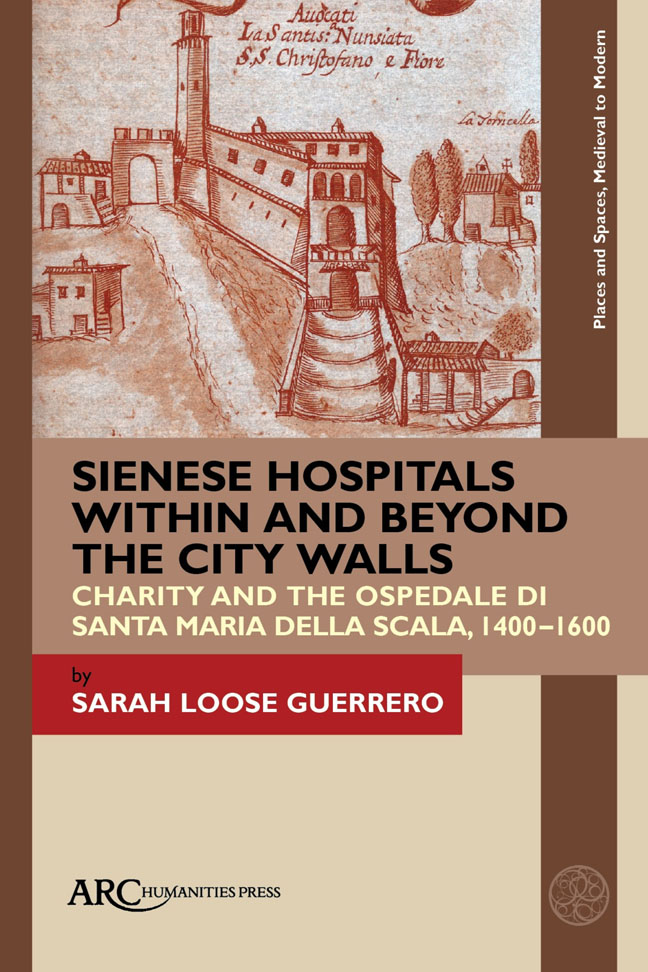 Sienese Hospitals within and beyond the City Walls
Sienese Hospitals within and beyond the City Walls Published online by Cambridge University Press: 17 February 2024
“I remind you that [the Ospedale di Santa Maria della Scala] is one of the eyes of your city, and the right is the Episcopate, while the left eye is the hospital. Look how the piazza in between is sort of long, like a nose. Hear me! Citizens, give charitably to the hospital!”
San Bernardino da SienaSan Bernardino of Siena, the dynamic Franciscan preacher of the fifteenth century, delivered the words above during a sermon given in the piazza del Duomo, standing between Siena's Cathedral and the Ospedale di Santa Maria della Scala. If his intent was to motivate charitable giving, then his choices here may strike the modern ear as odd. Rather than appealing to moral or spiritual reasons directly, San Bernardino uses the physical space of the hospital and cathedral to create an image in the minds of his listeners. He describes the piazza, one of two urban centres in Siena, as the face of the city, designating the cathedral and the hospital as its watchful eyes. Among the interesting implications here is the way he underscores the importance of the hospital to Siena and its people by emphasizing its location. San Bernardino paints Santa Maria della Scala as a significant urban institution, one that watches the city and her people, relying on them to give charitably.
By nature, the late medieval hospital was both a providing and a dependent institution, “a most pious house” woven into the fabric of urban life. The city was a crucial sphere, or geography, of power for hospitals. As a charitable resource for the cities they served, hospitals supplied care of the body for pilgrims, abandoned children, the poor, and the sick. The acts of charity performed by the men and women who lived and worked in hospitals were also spiritual; the good works and piety of hospitals served as a righteous sacrifice on behalf of society. Through the practice of charity, hospitals exercised social, religious, and civic power. However, at the same time that hospitals fulfilled the role of physical and spiritual providers, they were also dependent institutions. Hospitals often relied on local church and civic government in matters of administration and support, and financial stability depended to a large degree on donations and bequests.
To save this book to your Kindle, first ensure [email protected] is added to your Approved Personal Document E-mail List under your Personal Document Settings on the Manage Your Content and Devices page of your Amazon account. Then enter the ‘name’ part of your Kindle email address below. Find out more about saving to your Kindle.
Note you can select to save to either the @free.kindle.com or @kindle.com variations. ‘@free.kindle.com’ emails are free but can only be saved to your device when it is connected to wi-fi. ‘@kindle.com’ emails can be delivered even when you are not connected to wi-fi, but note that service fees apply.
Find out more about the Kindle Personal Document Service.
To save content items to your account, please confirm that you agree to abide by our usage policies. If this is the first time you use this feature, you will be asked to authorise Cambridge Core to connect with your account. Find out more about saving content to Dropbox.
To save content items to your account, please confirm that you agree to abide by our usage policies. If this is the first time you use this feature, you will be asked to authorise Cambridge Core to connect with your account. Find out more about saving content to Google Drive.